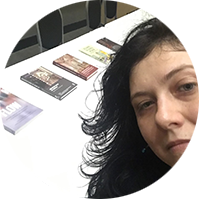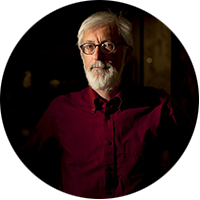-
Membership
Membership
Anyone with an interest in the history of the built environment is welcome to join the Society of Architectural Historians -
Conferences
Conferences
SAH Annual International Conferences bring members together for scholarly exchange and networking -
Publications
Publications
Through print and digital publications, SAH documents the history of the built environment and disseminates scholarship -
Programs
Programs
SAH promotes meaningful engagement with the history of the built environment through its programs -
Jobs & Opportunities
Jobs & Opportunities
SAH provides resources, fellowships, and grants to help further your career and professional life -
Support
Support
We invite you to support the educational mission of SAH by making a gift, becoming a member, or volunteering -
About
About
SAH promotes the study, interpretation, and conservation of the built environment worldwide for the benefit of all
Program Date: Wednesday, October 21, 2020
This webinar, an SAH CONNECTS event sponsored by the newly organized SAH Historic Interiors Affiliate Group (HIG), brings together panelists from diverse fields of academia and practice to discuss a fundamental question: what is a historic interior? Encompassing interior design, museology, furnishings, decorative arts, technology, material culture, anthropology, gender studies and more, the history of the interior is an interdisciplinary endeavor that is still very much under construction, especially in the United States. Entwined with, but distinct from architectural history, the history of the interior poses unique interpretive and preservation challenges. Join us for this event as we seek to define our goal: to consolidate and advance inquiry in the field, share methods and pedagogical strategies, and foster working relationships.
Paula Lupkin, associate professor at the University of North Texas, and Anca I. Lasc, associate professor at Pratt Institute, will moderate the discussion.
Participants:
-
Tara Dudley, The University of Texas at Austin
-
William Littmann, California College of the Arts in San Francisco
-
Steven Lubar, Brown University
-
Krystal Racaniello, Routledge
-
Penny Sparke, Kingston University, London
-
Lisa M. Tucker, Virginia Tech
Speakers

Tara Dudley is a Lecturer in The University of Texas at Austin School of Architecture where she teaches Interior Design History, American Architecture, and African American Experiences in Architecture. Dr. Dudley holds a doctorate in Architectural History and a master’s in Historic Preservation from UT-Austin; she obtained a B.A. in Art History from Princeton University. Her research focuses on nineteenth-and early twentieth-century American architecture and design. She consults on historic preservation and cultural resource management projects across the country. Her work has included researching and writing historic furnishings reports for Martin Luther King Jr. National Historical Park, Lyndon B. Johnson National Historical Park, and Hampton National Historic Site. Dr. Dudley is particularly interested in highlighting the under-told and untold contributions of African Americans to the built environment. Her book Building Antebellum New Orleans: Free People of Color and their Influence is scheduled for publication by The University of Texas Press in spring 2021.

Anca I. Lasc teaches the history of interiors and museum institutions at Pratt Institute, where she is an Associate Professor in the History of Art and Design Department. Anca’s publications include Designing the French Interior: The Modern Home and Mass Media, co-edited with Georgina Downey and Mark Taylor (2015); Architectures of Display: Department Stores and Modern Retail, co-edited with Patricia Lara-Betancourt and Margaret Maile Petty (2018); Visualizing the Nineteenth-Century Home: Modern Art and the Decorative Impulse (2016); and her single-authored study Interior Decorating in Nineteenth-Century France: The Visual Culture of a New Profession (2018). Anca’s current projects include History, Theory, and Practice of Autonomous Interiors (forthcoming 2020) and Appropriated Interiors (forthcoming 2021), two volumes that she has developed with her colleagues at Pratt Institute and which aim to bring together interior design history, theory, and practice.

William Littmann is a senior adjunct professor at the California College of the Arts in San Francisco, where he teaches the History and Theory of Interior Design survey as well as courses on the history or architecture and modern art. He has been a frequent guest on the podcast 99% Invisible. He received his MA from the Columbia University School of Journalism and PhD in architectural history from the University of California, Berkeley. His article, “Walk This Way: Reconsidering Walking for the Study of Cultural Landscapes,” appears in the recent issue of Buildings & Landscapes: Journal of the Vernacular Architecture Forum.

Steven Lubar, a professor of American studies at Brown University, writes and teaches on museums and museum history, public and digital humanities, and the history of technology and skill. A 2015 Guggenheim Fellowship helped support his most recent book, Inside the Lost Museum: Curating, Past and Present. Before coming to Brown, he was a curator at the National Museum of American History. At Brown, he has been director of Brown’s John Nicholas Brown Center for Public Humanities and Cultural Heritage and the Haffenreffer Museum of Anthropology from 2010 to 2012, and is presently faculty director of Brown’s Center for Digital Scholarship.

Paula Lupkin, associate professor at the University of North Texas, is a historian of design, architecture, and cities. Through fieldwork, archival research, teaching, writing, and digital humanities projects, she examines the ways that capital flows and technological innovations carve patterns in the land, shape the design of the material world, and provide a framework for human relations. Supported by the Graham Foundation, the Charles Warren Center at Harvard, the Texas State Historical Society, and the Clements Center for Southwest Studies at SMU, she has been the author of books and articles on diverse topics including YMCA architecture, American interior design practice, and the relationship between beer, cannabis, and the design of Louis Sullivan's famous skyscraper, the Wainwright Building. Recent work on historic interiors includes Shaping the American Interior: Contexts, Structures, and Practices (Routledge, 2018), co-edited with Penny Sparke, and “The Telegraphic Interior: Networking Space for Capital Flows in the 1920s” in Interior Provocations (Routledge, forthcoming 2020).





